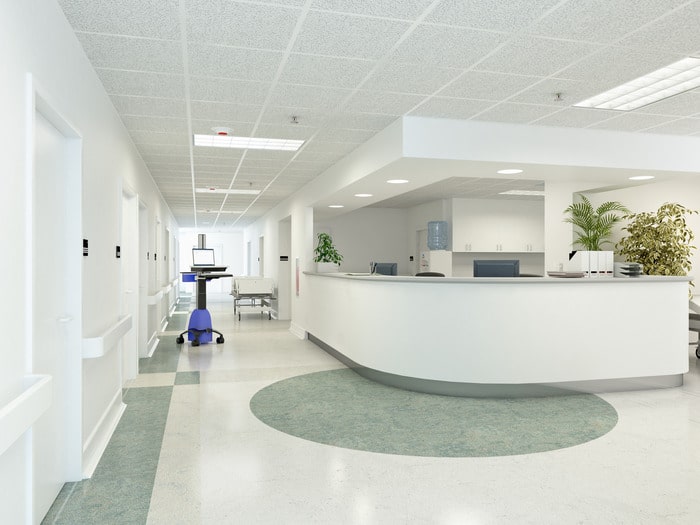
- August 13, 2023
- |security guard company
- | 0
- 631
Hospital Emergency Response Plans –
In the realm of healthcare, patient safety and the well-being of staff are of paramount importance. As a distinguished hospital security company, XPressGuards understands the critical role that emergency response plans play in ensuring the security and safety of patients, visitors, and medical personnel.
This article delves into the intricacies of hospital emergency response plans, covering protocols for security threats, violent incidents, and medical emergencies, and the multifaceted strategies hospitals employ to effectively address these challenges.
1. The Need for Comprehensive Emergency Response Plans
Emergency situations can arise unexpectedly within hospital premises, posing a threat to patients, staff, and the overall safety of the facility. Comprehensive emergency response plans are designed to address various scenarios, from security threats and violent incidents to medical emergencies, with the goal of minimizing harm and ensuring swift and efficient responses.
2. Security Threats and Violent Incidents
Active Threat Protocols: Hospitals establish protocols for responding to active threats, such as armed individuals or acts of violence. These protocols outline steps for lockdowns, evacuation procedures, communication, and coordination with law enforcement.
Security Personnel Training: Hospital security staff receive specialized training in handling security threats and violent incidents. This training equips them to act swiftly, defuse situations, and protect patients and staff.
Access Control Measures: Hospitals implement access control measures that limit entry points and require identification for entry. This prevents unauthorized individuals from gaining access to patient care areas.
Emergency Communication Systems: Hospitals have communication systems that allow staff to quickly alert security and relevant personnel in case of security threats. These systems facilitate timely coordination.
Security Alarms and Notifications: Hospitals are equipped with security alarm systems that can be activated in case of emergencies. These alarms trigger notifications to security personnel, enabling them to respond immediately.
Collaboration with Law Enforcement: Hospital emergency response plans involve collaboration with local law enforcement agencies. Hospitals work closely with law enforcement to ensure a coordinated response in case of security threats.
3. Medical Emergencies
Code Blue and Rapid Response Teams: Hospitals have code systems to alert medical staff to specific emergencies. A “Code Blue” often indicates a medical emergency, prompting a rapid response team to provide immediate assistance.
Life-Saving Equipment: Hospitals maintain strategically placed life-saving equipment such as automated external defibrillators (AEDs), crash carts, and emergency medications. These resources are easily accessible in case of medical emergencies.
Staff Training and Drills: Medical personnel receive regular training and participate in drills to ensure they are well-prepared to respond to medical emergencies. These drills simulate real-life situations, enhancing preparedness.
Emergency Medical Services (EMS) Coordination: Hospitals maintain a strong coordination with EMS providers to ensure that critically ill patients can be transported to the facility promptly for specialized care.
Patient Monitoring Systems: Advanced patient monitoring systems track vital signs in real time. In case of medical emergencies, staff can receive immediate alerts and respond accordingly.
4. Coordination and Communication
Incident Command Structure: Hospitals establish an incident command structure that designates roles and responsibilities during emergencies. This structure ensures clear communication and effective decision-making.
Emergency Notification Systems: Hospitals utilize emergency notification systems that enable them to communicate with staff, patients, and visitors through various channels, including text messages, PA announcements, and digital displays.
Centralized Communication Centers: Hospitals often have centralized communication centers where information is gathered, assessed, and disseminated during emergencies. This centralization ensures consistent and accurate communication.
5. Regular Testing and Evaluation
Tabletop Exercises: Hospitals conduct tabletop exercises where key stakeholders gather to discuss emergency scenarios and simulate responses. These exercises identify gaps and areas for improvement in emergency plans.
Drills and Simulations: Regular drills and simulations allow hospital staff to practice responding to various emergency situations. These drills help identify strengths and weaknesses in the response process.
After-Action Reviews: After each emergency, hospitals conduct after-action reviews to assess the effectiveness of their response. Lessons learned are used to refine emergency response plans.
6. Continuous Improvement
Hospitals are committed to continuous improvement in their emergency response plans. They stay abreast of industry best practices, technological advancements, and evolving threats to ensure that plans remain up to date and effective.
Hospital emergency response plans are the cornerstone of patient safety and staff well-being. By employing strategies such as active threat protocols, specialized training, life-saving equipment, coordination with law enforcement, and regular testing, hospitals create an environment where everyone can trust in their security during emergency situations.
As a respected hospital security company, XPressGuards collaborates with healthcare facilities to ensure that their emergency response plans are robust, effective, and capable of safeguarding lives in times of crisis. Contact us to learn more about our security services.


